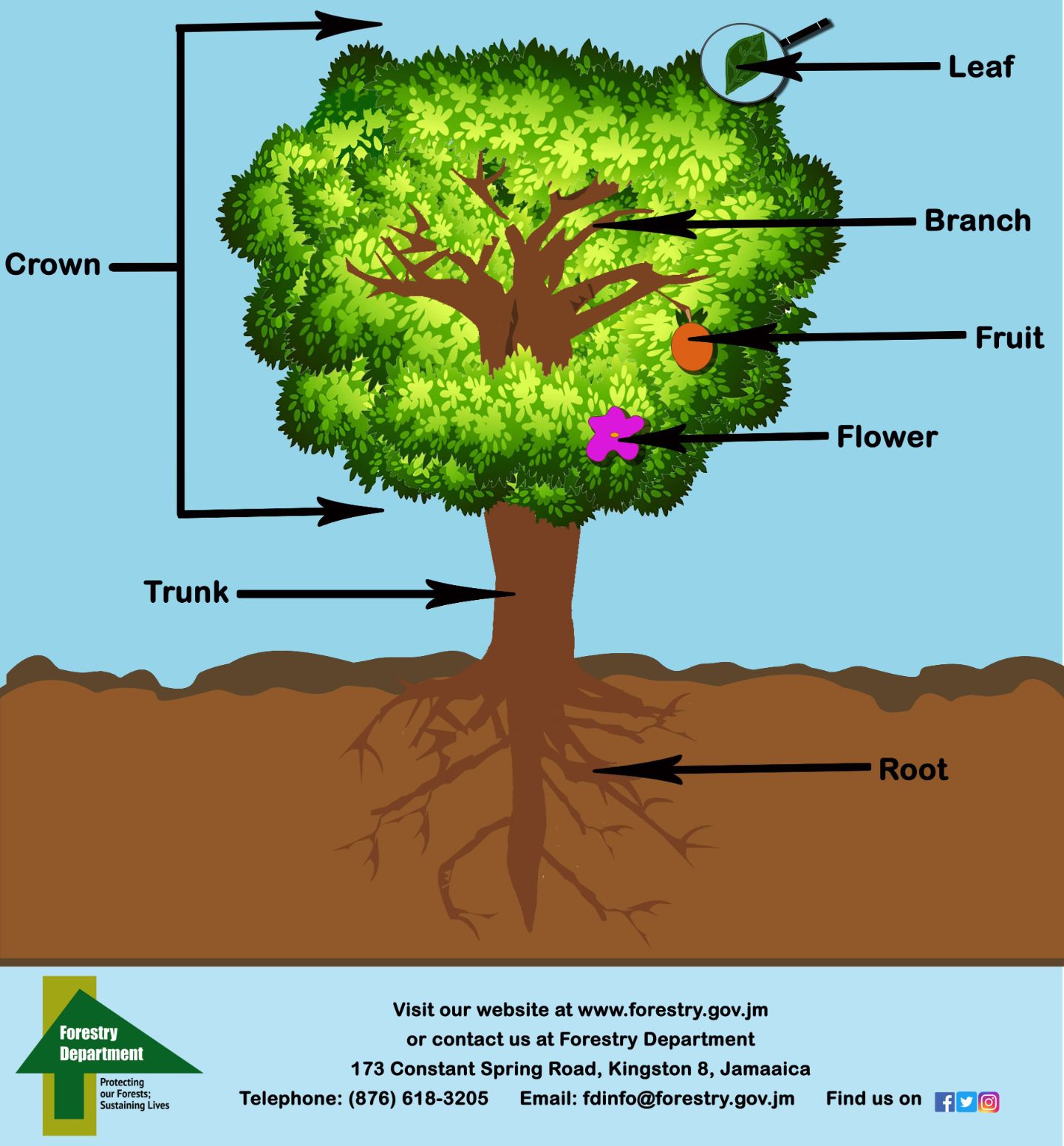
ForestryDepartment Early Childhood
In short, trees help to maintain the balance of nature. Parts of a Tree Diagram. A mature tree has three basic parts: 1) roots, 2) crown, and 3) trunk or bole. Although the structure of these parts may vary based on the altitude and geographical position of the tree, each of them performs distinct functions.
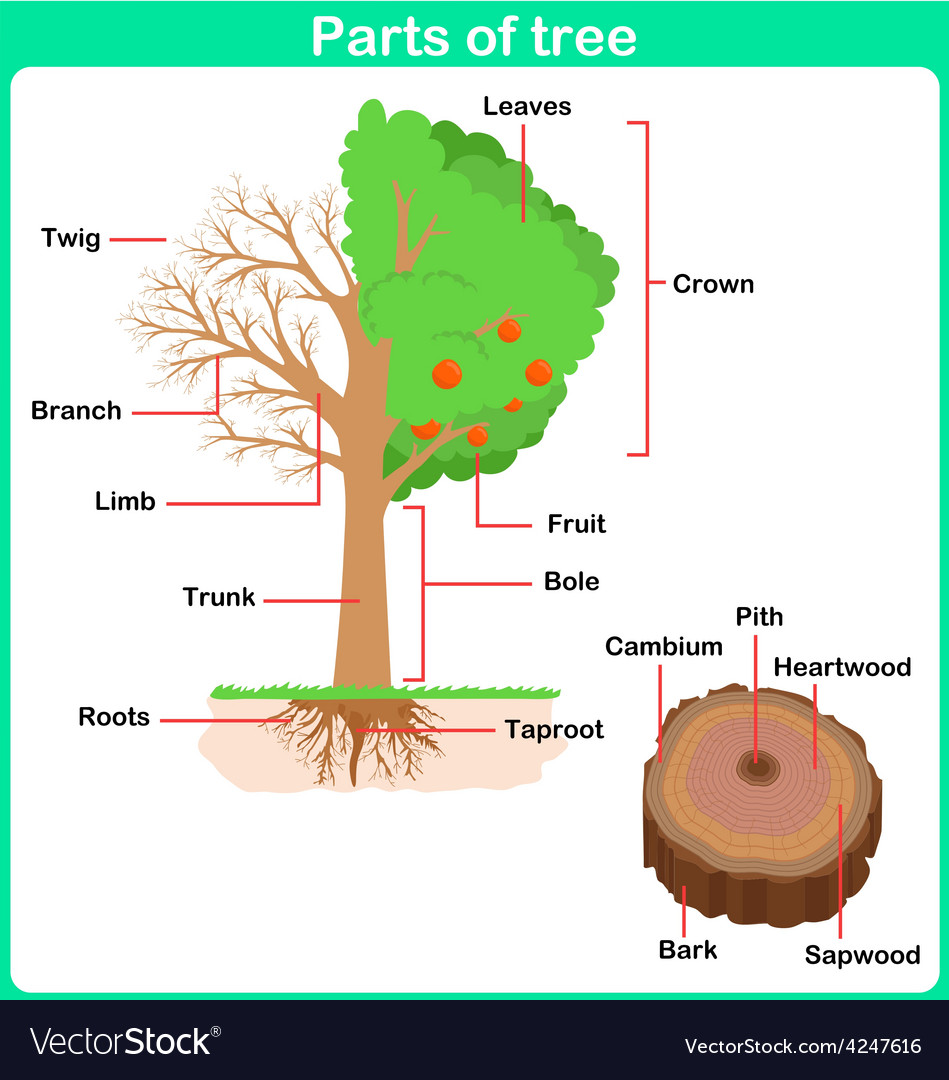
Leaning parts of tree for kids worksheet Vector Image
There are 6 parts that make up a tree. *See image below: Roots-Secure the tree to the ground. While these parts are underground, they help to collect water and nutrients from the soil to transport up the tree to the other vital parts. Trunk- The main stem of the plant that connects the roots to the limbs (branches) which supports the crown of.

Parts of a Tree with Roots on a White Background. Stock Vector Illustration of spreading, crop
A tree is a vascular plant of a woody substance that exhibits both primary and secondary growth. The basic sections of a tree are the root system, the trunk, the branches and the foliage. The function and description of each part are detailed below. Vascular plants are plants with tissues that specialize in moving resources through the organism.

FREE Printable Anatomy of a Tree Diagram in 2021 Study printables, Nature study, Tree diagram
Here are the different tree parts and the functions each one of them serves: 1. Leaves. Leaves belong to the crown of the tree, which is the top part of the tree that grows out of the trunk and includes the branches and stems. While each tree has its unique biological makeup, the average tree consists of 5% leaves.
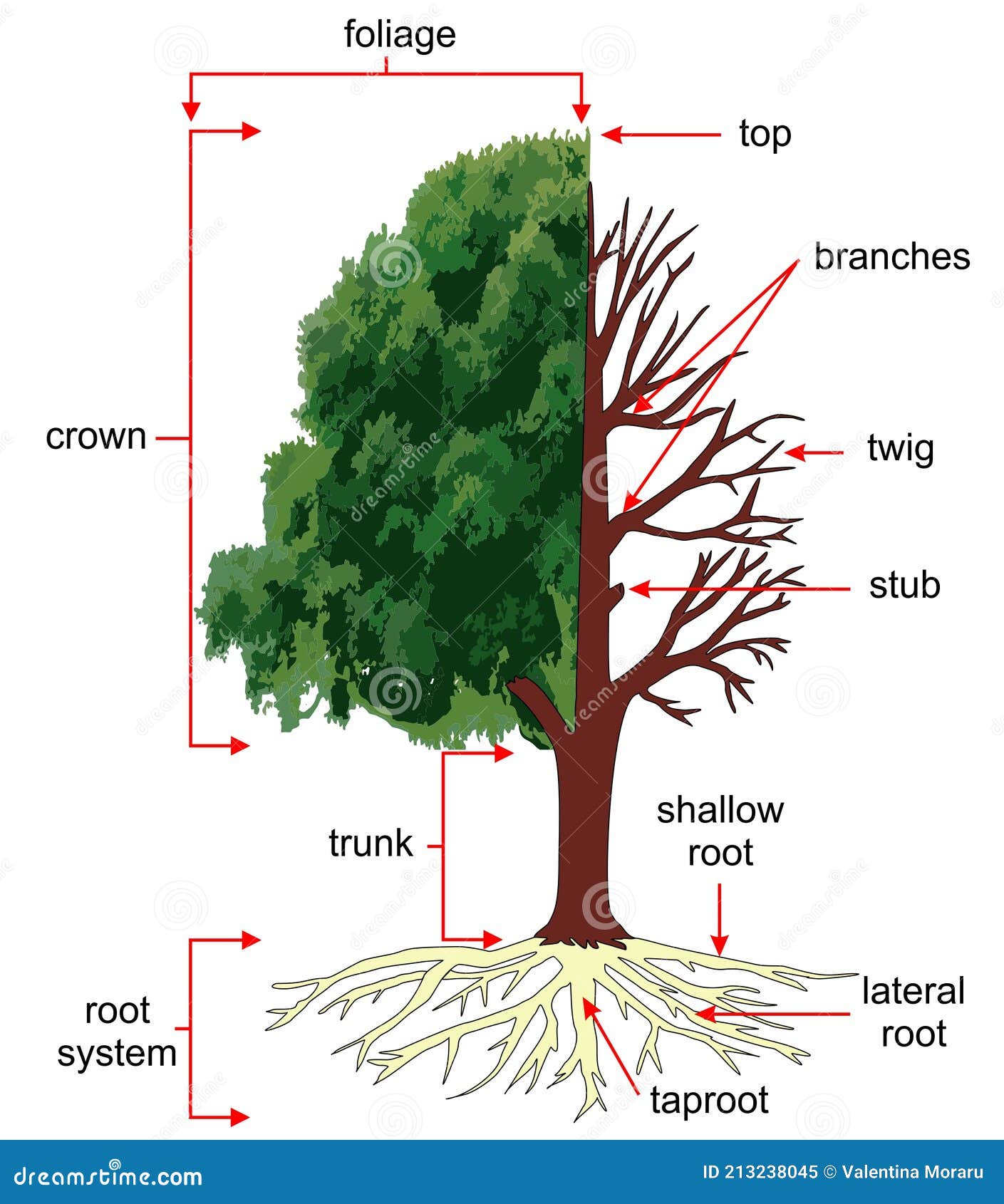
Anatomy of the Tree or Structure of a Tree. Stock Illustration Illustration of root, fruit
Each part of a tree crown has a different function. The limbs of the tree extend from the tree trunk, creating structure and attaching branches and stems to the leaves, flowers, and fruits. The limbs also deliver nutrients to various parts of the tree for conversion to energy. The branches and stems of the tree hold the leaves, fruits, and.

parts of a tree and their functions Joan Scales
Roots. They are the underground extensions of a tree's structure that anchor it in the soil and absorb water and nutrients. They create a network to support the tree's growth and stability. 1. Crown. The crown of a tree is the uppermost part of the tree. It's essentially the "top" or "head" of the tree.

Parts of a Tree Ellii (formerly ESL Library)
Trunk: The most recognizable part of the tree and its support structure. Roots: Provide stability, water, and a food retrieval service, healthy roots are crucial for a tree's survival. 1. Canopy: This is the collective name for the twigs, branches, and leaves on a tree. Leaf: Essential for converting CO 2 and sunlight into oxygen.

parts of tree English For Life
1. Crown. Crown part of the trees | image by Dietmar Rabich via Wikimedia Commons | CC BY-SA 4.0. The top of the tree which contains the most of its leaves and canopy. Most of the photosynthesis of the tree happens here in the crown. The crown of a deciduous tree is usually shaped like an oval or a partial circle.
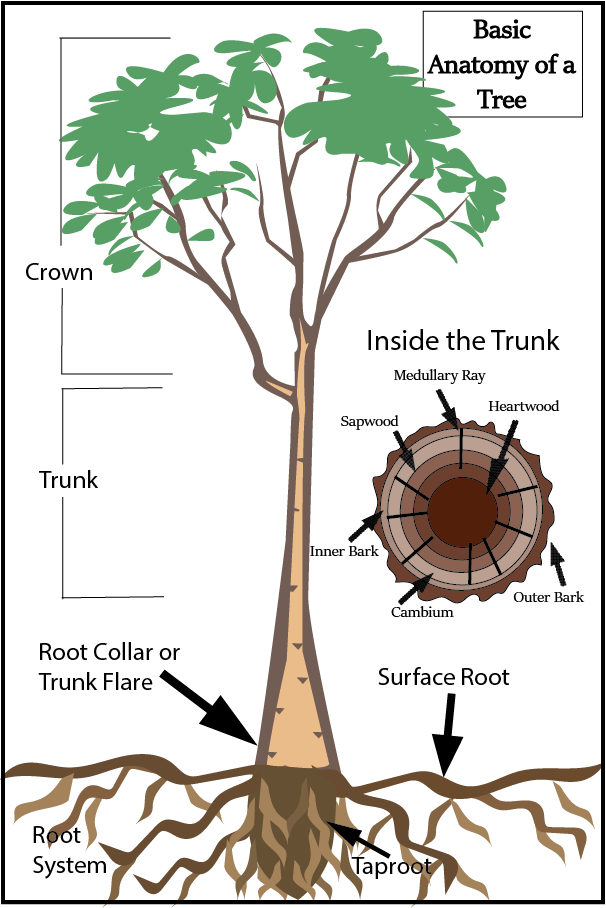
A Guide to Basic Tree Care in Utah Stewart's Lawn
Tree - Structure, Growth, Adaptation: Generations of terrestrial plants recycling nutrients and energy into the stratum led to the contribution of developing rich organic soil suitable for large shrubs and herbs. Trees are organized into three major organs: roots, stems, and leaves. All the tree branches and central stem terminate in growing points called shoot apical meristems.

Parts of the Tree Things from Trees Learn parts of the Tree for kindergarten Kids Entry
Crown. Above the trunk is the crown. The crown is all the branches and leaves on the tree. The crown is the powerhouse of the tree. The leaves take in sunlight which reacts with the green chlorophyll to transform light into sugars. The process is called photosynthesis and the byproduct is oxygen released into the air.
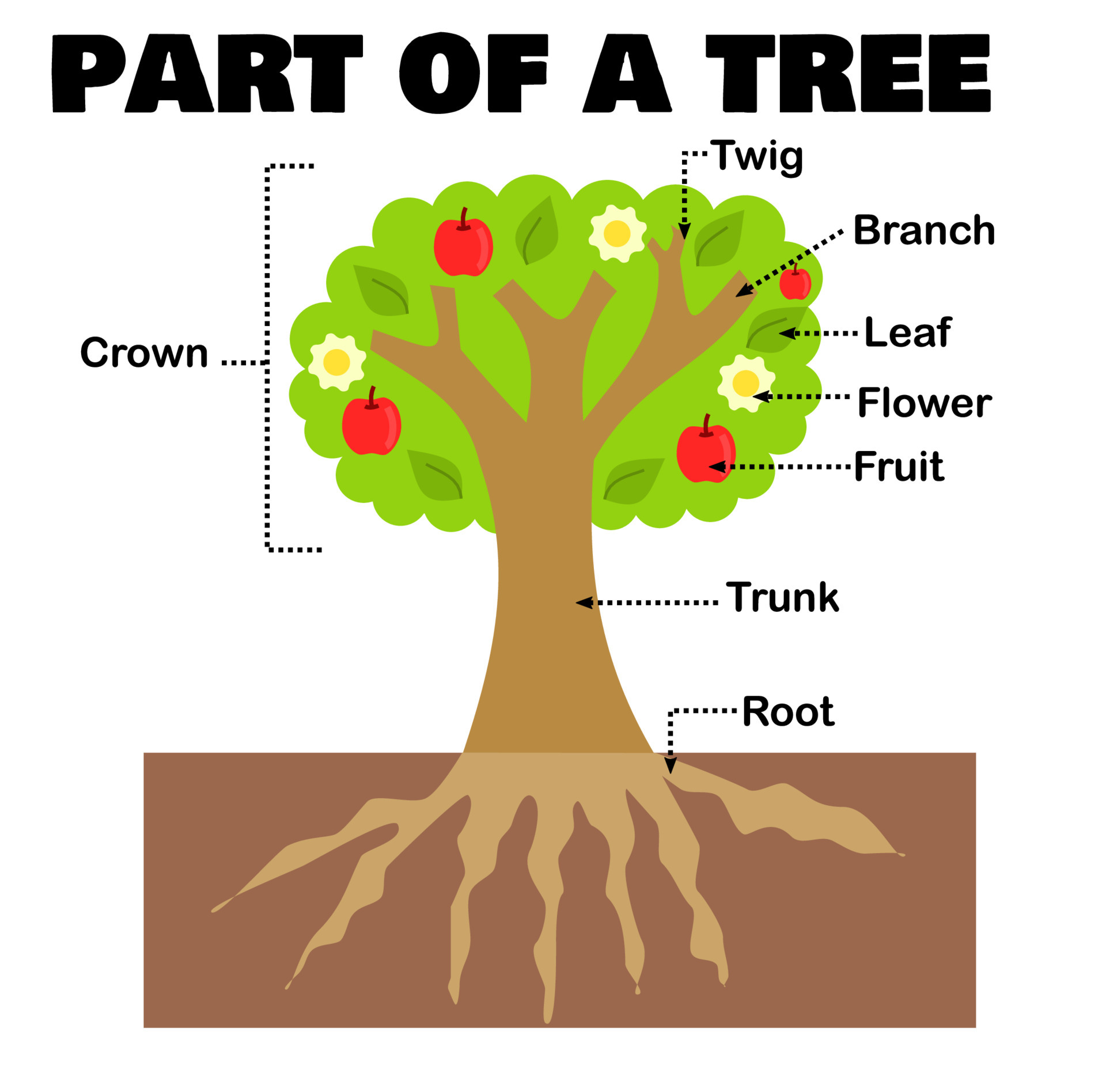
Part of a tree or plant for science and education.Worksheet for kids.Morphology or botany.Tree
Anatomy of a tree. A: The outer bark is the tree's protection from the outside world. Continually renewed from within, it helps keep out moisture in the rain, and prevents the tree from losing moisture when the air is dry. It insulates against cold and heat and wards off insect enemies. B: The inner bark , or "phloem", is pipeline through.
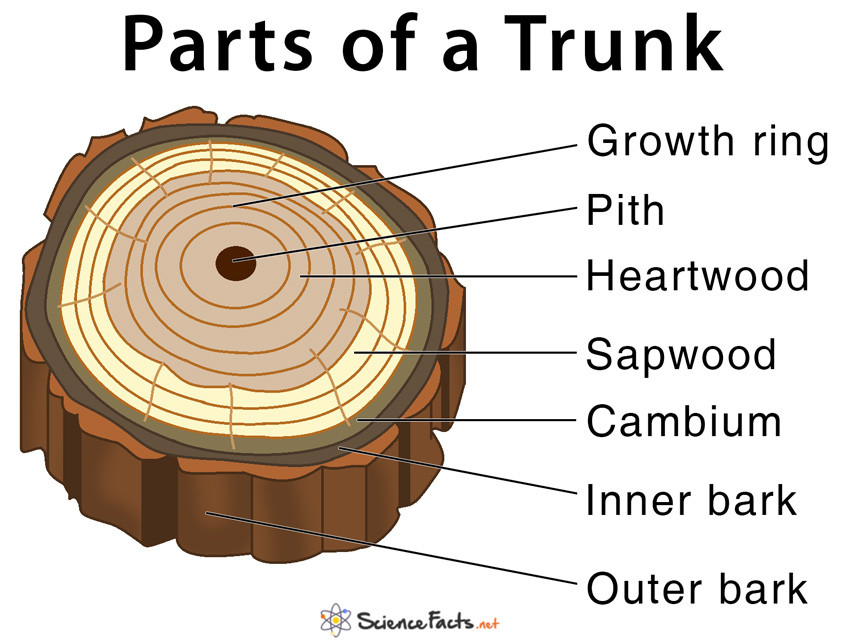
Parts of a Tree and Their Functions Science Facts
The inner bark, or "phloem", is pipeline through which food is passed to the rest of the tree. It lives for only a short time, then dies and turns to cork to become part of the protective outer bark. The cambium cell layer is the growing part of the trunk. It annually produces new bark and new wood in response to hormones that pass down.
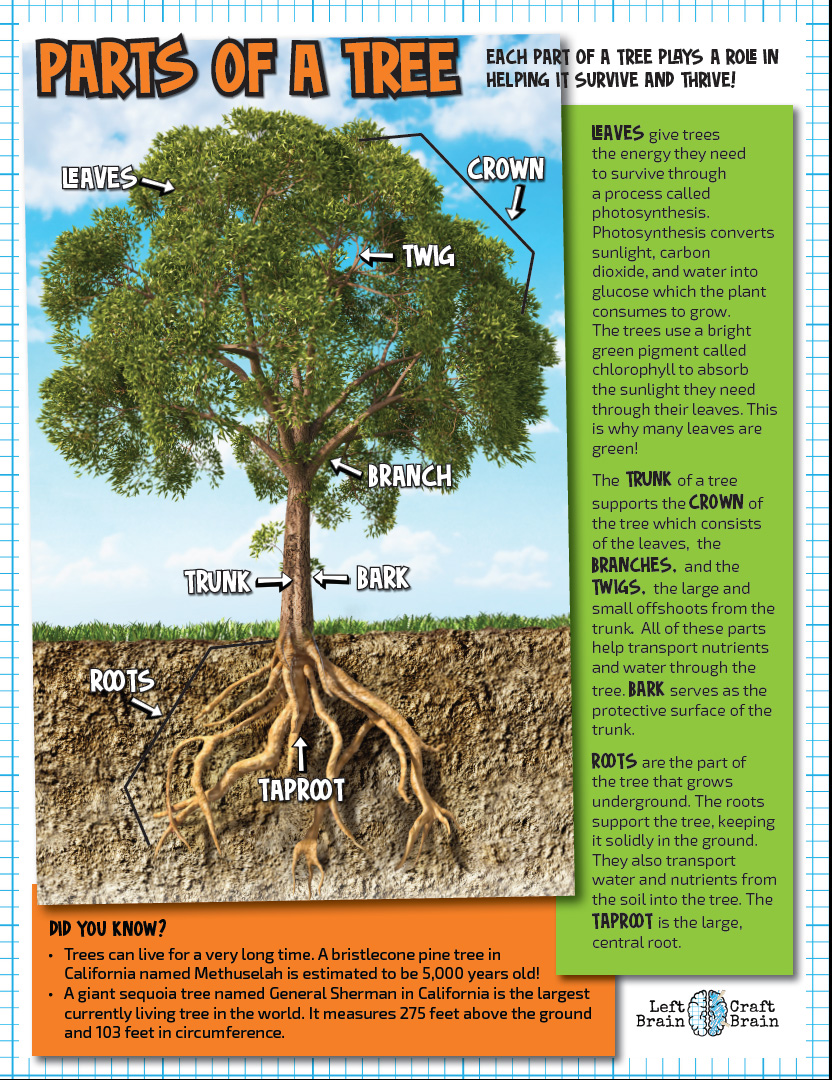
Printables Parts of a Tree HP® Official Site
The following are all trunk parts, moving from the outside to the inside. Bark covers the trunk and branches and protects the tree from disease, fire, and injury. Inner bark or phloem carries sap down from the leaves to the branches, trunk and roots. Cambium is a layer that is about two cells thick. Each year it grows new phloem to the outside.
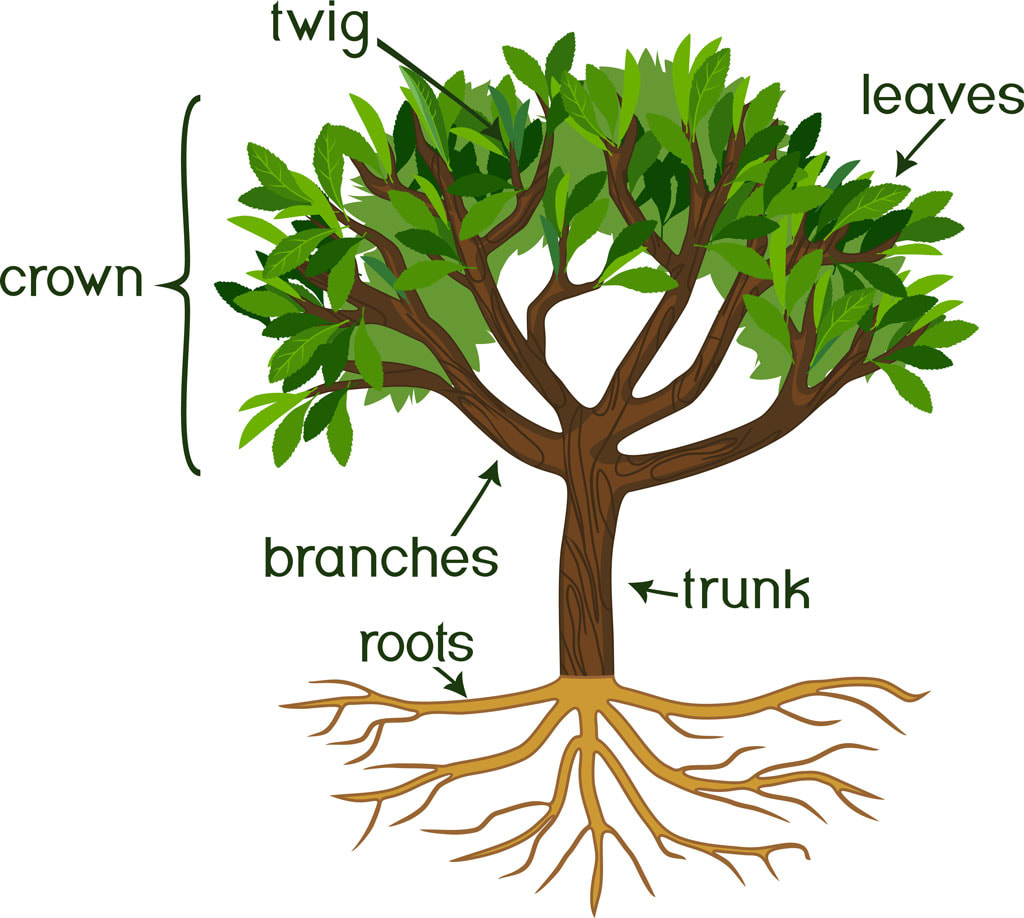
Basic Tree Anatomy The parts of a tree, and their function Snohomish Tree Co.
FINDING YOUR PARTS IS AS EASY AS 1, 2, 3! Easy-to-use diagrams of your model help you find the parts you need fast! Or Contact us and we'll help you! With over 60,000 parts in stock in our 40,000 square foot warehouse, consider us YOUR virtual parts room! We ship 80% of orders within one business day, so you get parts FAST!
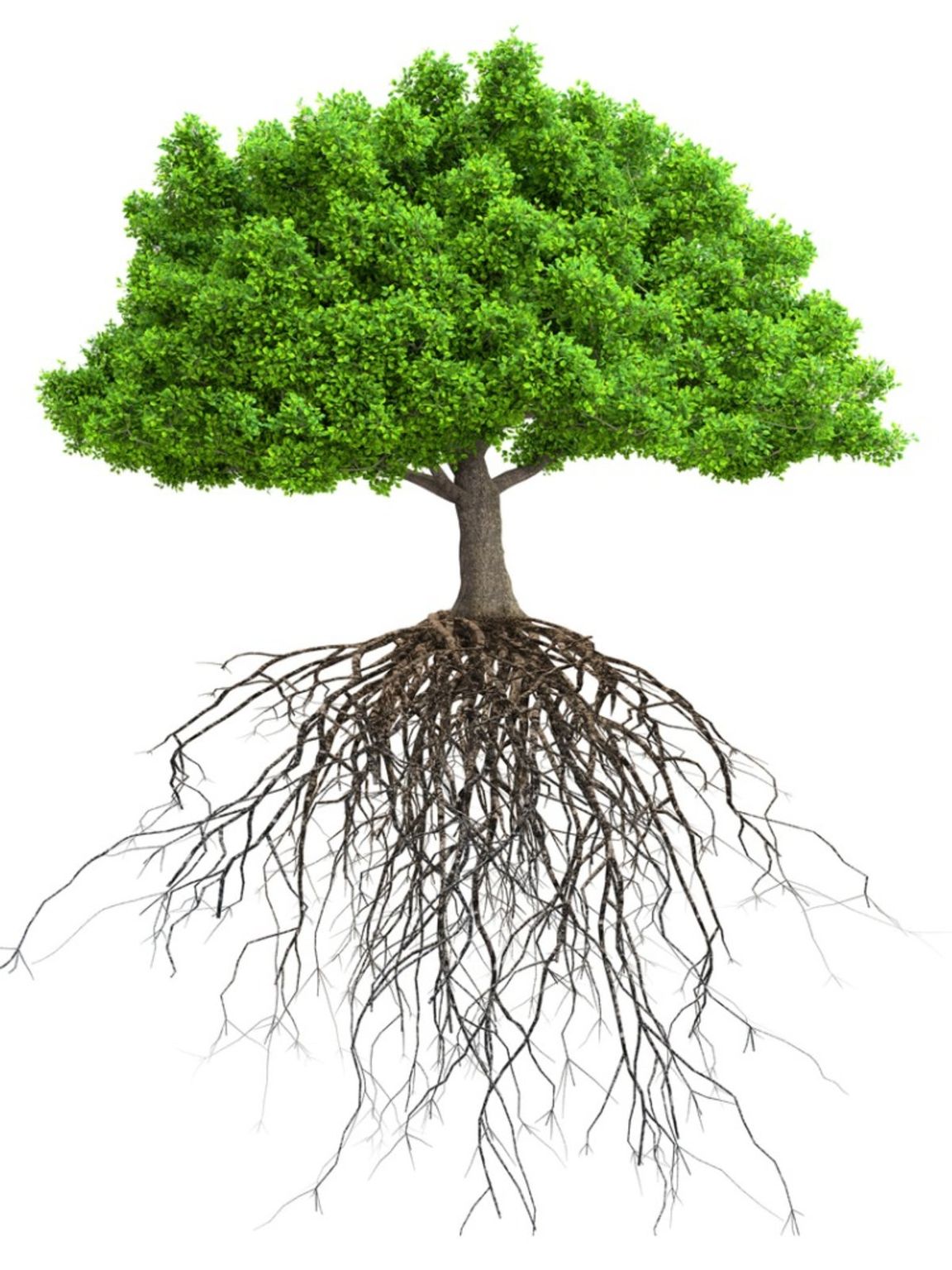
What Do Parts Of A Tree Do Teaching Kids How A Tree Functions
324,316 tree parts stock photos, 3D objects, vectors, and illustrations are available royalty-free. See tree parts stock video clips. Parts of plant. Morphology of peach tree with fruits, flowers, green leaves and root system isolated on white background. Environment Earth Day In the hands of trees growing seedlings.

Resources to learn English Trees
The trunk is the main structural part of a tree, providing support and stability. It is the vertical, cylindrical section of the tree that extends from the roots to the branches. The trunk is composed of different layers, each with its own unique characteristics and functions. Bark: The outermost layer of the trunk is called the bark.